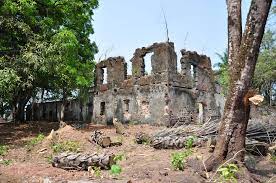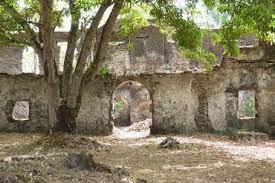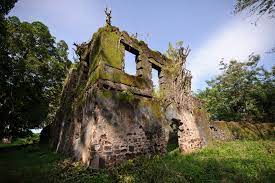Bunce Island is a small island located in the Sierra Leone River, about 20 miles upstream from Freetown, the capital of Sierra Leone. It holds historical significance as a major slave trading post during the transatlantic slave trade era. The island was operated by
European traders, primarily the British, captured and held African people before shipping them across the Atlantic Ocean to the Americas as slaves. Today, Bunce Island is a UNESCO World Heritage Site and serves as a reminder of the dark history of slavery
and the resilience of the African people. It attracts tourists and scholars interested in learning about this tragic chapter in history and its impact on modern societies.
Check out the importance of Bunce Island in Sierra Leone here: https://www.youtube.com/watch?v=HGrKRbvbaSE
A Glimpse into Bunce Island
Sierra Leone River, just upstream from Freetown, lies a small yet profoundly significant island – Bunce Island. Steeped in history
and bearing witness to the darkest chapters of humanity, Bunce Island serves as a poignant reminder of the transatlantic slave trade’s harrowing legacy.
Bunce Island’s history dates back to the 17th century when it was established as a British trading post. Initially used for trading
in ivory and timber, it later became one of the most notorious slave forts in West Africa. European traders, primarily British,
used the island as a hub for capturing, detaining, and processing African captives before shipping them across the Atlantic Ocean to the Americas.
Bunce Island boasts impressive architectural structures, including fortified walls, warehouses, and living quarters, which stand
as tangible reminders of its role in the slave trade. The strategic design of these buildings reflects the meticulous planning that went into facilitating the capture and transportation of enslaved Africans.
Despite its dark history, Bunce Island also serves as a site of cultural exchange. Traders from Europe, Africa, and the Americas
converged on the island, creating a melting pot of languages, traditions, and beliefs. While much of this exchange was rooted in exploitation, it also fostered connections that endure to this day.


Structure of Bunce Island
The Slave Trade Era
During the peak of the transatlantic slave trade, Bunce Island played a pivotal role in the trafficking of enslaved Africans. Men,
women, and children were forcibly taken from their homes, held captive in deplorable conditions on the island, and subjected to unimaginable suffering before being sold into slavery. The island’s strategic location, coupled with its fortified structures, made
it a lucrative center for the British slave trade.
Ongoing archaeological excavations on Bunce Island have unearthed valuable artifacts that offer insights into the daily lives of
both enslaved Africans and European traders. These discoveries provide a glimpse into the material culture, technology, and social
dynamics of the time, enriching our understanding of this complex period in history.
The Impact on African Societies
The legacy of Bunce Island extends far beyond its physical boundaries. The transatlantic slave trade inflicted immeasurable
trauma on African societies, tearing apart families, disrupting cultural practices, and perpetuating economic exploitation. The
repercussions of this dark period continue to reverberate through generations, shaping the socio-economic landscape of the African continent.
Various commemorative events and ceremonies are held on Bunce Island to honor the memory of those who suffered and died there.
These gatherings serve as opportunities for reflection, remembrance, and reconciliation, bringing together descendants of enslaved Africans with visitors from around the world to pay homage to the island’s past.
Preserving the Legacy
In recent years, efforts have been made to preserve and commemorate the history of Bunce Island. Restoration projects,
archaeological excavations, and educational initiatives aim to shed light on the island’s past while honoring the resilience of
those who endured unimaginable suffering within its walls. Visiting Bunce Island today offers a somber yet essential opportunity to reflect on the atrocities of the past and reaffirm our commitment to justice and human rights.
Educational programs and interpretive materials have been developed to raise awareness about Bunce Island’s history
and the broader context of the transatlantic slave trade. By engaging visitors in dialogue and critical reflection, these initiatives
aim to challenge misconceptions, confront historical injustices, and promote dialogue around issues of race, identity, and human rights.
In addition to its historical significance, Bunce Island is also ecologically important, serving as a habitat for diverse plant and animal species. Efforts to conserve the island’s natural resources and protect its biodiversity are underway, highlighting the interconnectedness of environmental preservation and cultural heritage.
Bunce Island stands as a solemn testament to the horrors of the transatlantic slave trade and the enduring strength of the human spirit. As we navigate the complexities of our shared history, let us heed the lessons of Bunce Island and strive to build a world free from oppression and injustice. By acknowledging the past and honoring the voices of those silenced by slavery, we can forge a path towards healing and reconciliation.
Read More: https://placesandlifestyle.com/elmina-castle-the-legacy-of-transatlantic-slavery-and-resilience/




